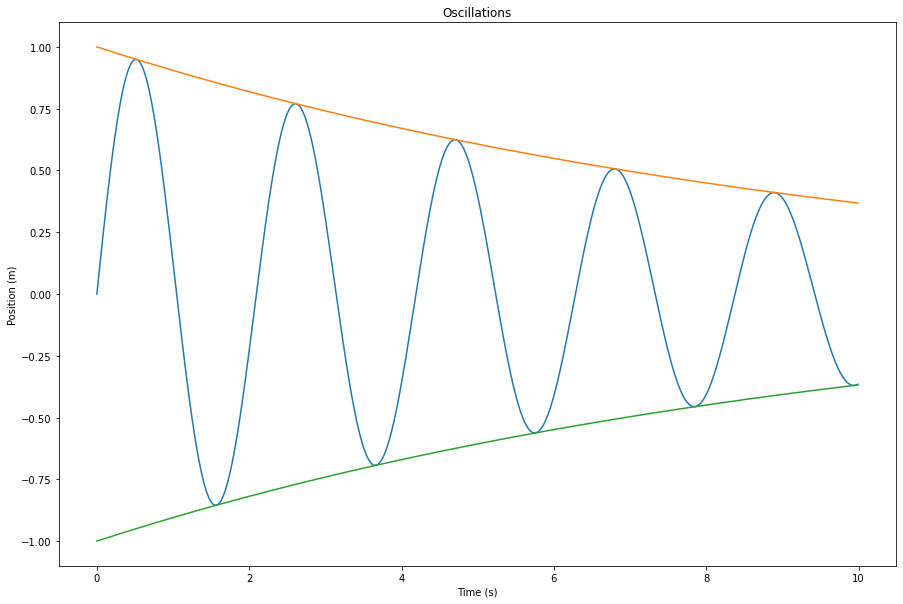Swift For TensorFlow oferece suporte à interoperabilidade Python.
Você pode importar módulos Python do Swift, chamar funções Python e converter valores entre Swift e Python.
import PythonKit
print(Python.version)
3.6.9 (default, Oct 8 2020, 12:12:24) [GCC 8.4.0]
Configurando a versão do Python
Por padrão, quando você import Python , o Swift pesquisa os caminhos da biblioteca do sistema para a versão mais recente do Python instalada. Para usar uma instalação específica do Python, defina a variável de ambiente PYTHON_LIBRARY para a biblioteca compartilhada libpython fornecida pela instalação. Por exemplo:
export PYTHON_LIBRARY="~/anaconda3/lib/libpython3.7m.so"
O nome exato do arquivo será diferente entre ambientes e plataformas Python.
Alternativamente, você pode definir a variável de ambiente PYTHON_VERSION , que instrui o Swift a pesquisar caminhos de bibliotecas do sistema para uma versão Python correspondente. Observe que PYTHON_LIBRARY tem precedência sobre PYTHON_VERSION .
No código, você também pode chamar a função PythonLibrary.useVersion , que equivale à configuração PYTHON_VERSION .
// PythonLibrary.useVersion(2)
// PythonLibrary.useVersion(3, 7)
Nota: você deve executar PythonLibrary.useVersion logo após import Python , antes de chamar qualquer código Python. Não pode ser usado para alternar dinamicamente as versões do Python.
Defina PYTHON_LOADER_LOGGING=1 para ver a saída de depuração para carregamento da biblioteca Python .
Noções básicas
Em Swift, PythonObject representa um objeto do Python. Todas as APIs Python usam e retornam instâncias PythonObject .
Tipos básicos em Swift (como números e arrays) são conversíveis em PythonObject . Em alguns casos (para literais e funções que utilizam argumentos PythonConvertible ), a conversão acontece implicitamente. Para converter explicitamente um valor Swift para PythonObject , use o inicializador PythonObject .
PythonObject define muitas operações padrão, incluindo operações numéricas, indexação e iteração.
// Convert standard Swift types to Python.
let pythonInt: PythonObject = 1
let pythonFloat: PythonObject = 3.0
let pythonString: PythonObject = "Hello Python!"
let pythonRange: PythonObject = PythonObject(5..<10)
let pythonArray: PythonObject = [1, 2, 3, 4]
let pythonDict: PythonObject = ["foo": [0], "bar": [1, 2, 3]]
// Perform standard operations on Python objects.
print(pythonInt + pythonFloat)
print(pythonString[0..<6])
print(pythonRange)
print(pythonArray[2])
print(pythonDict["bar"])
4.0 Hello slice(5, 10, None) 3 [1, 2, 3]
// Convert Python objects back to Swift.
let int = Int(pythonInt)!
let float = Float(pythonFloat)!
let string = String(pythonString)!
let range = Range<Int>(pythonRange)!
let array: [Int] = Array(pythonArray)!
let dict: [String: [Int]] = Dictionary(pythonDict)!
// Perform standard operations.
// Outputs are the same as Python!
print(Float(int) + float)
print(string.prefix(6))
print(range)
print(array[2])
print(dict["bar"]!)
4.0 Hello 5..<10 3 [1, 2, 3]
PythonObject define conformidades com muitos protocolos Swift padrão:
-
Equatable -
Comparable -
Hashable -
SignedNumeric -
Strideable -
MutableCollection - Todos os protocolos
ExpressibleBy_Literal
Observe que essas conformidades não são de tipo seguro: ocorrerão travamentos se você tentar usar a funcionalidade do protocolo de uma instância PythonObject incompatível.
let one: PythonObject = 1
print(one == one)
print(one < one)
print(one + one)
let array: PythonObject = [1, 2, 3]
for (i, x) in array.enumerated() {
print(i, x)
}
True False 2 0 1 1 2 2 3
Para converter tuplas de Python para Swift, você deve conhecer estaticamente a aridade da tupla.
Chame um dos seguintes métodos de instância:
-
PythonObject.tuple2 -
PythonObject.tuple3 -
PythonObject.tuple4
let pythonTuple = Python.tuple([1, 2, 3])
print(pythonTuple, Python.len(pythonTuple))
// Convert to Swift.
let tuple = pythonTuple.tuple3
print(tuple)
(1, 2, 3) 3 (1, 2, 3)
Integrações do Python
Acesse os recursos internos do Python por meio da interface global Python .
// `Python.builtins` is a dictionary of all Python builtins.
_ = Python.builtins
// Try some Python builtins.
print(Python.type(1))
print(Python.len([1, 2, 3]))
print(Python.sum([1, 2, 3]))
<class 'int'> 3 6
Importando módulos Python
Use Python.import para importar um módulo Python. Funciona como a palavra-chave import em Python .
let np = Python.import("numpy")
print(np)
let zeros = np.ones([2, 3])
print(zeros)
<module 'numpy' from '/tmpfs/src/tf_docs_env/lib/python3.6/site-packages/numpy/__init__.py'> [[1. 1. 1.] [1. 1. 1.]]
Use a função de lançamento Python.attemptImport para realizar uma importação segura.
let maybeModule = try? Python.attemptImport("nonexistent_module")
print(maybeModule)
nil
Conversão com numpy.ndarray
Os seguintes tipos Swift podem ser convertidos de e para numpy.ndarray :
-
Array<Element> -
ShapedArray<Scalar> -
Tensor<Scalar>
A conversão será bem-sucedida somente se o dtype de numpy.ndarray for compatível com o tipo de parâmetro genérico Element ou Scalar .
Para Array , a conversão de numpy será bem-sucedida somente se numpy.ndarray for 1-D.
import TensorFlow
let numpyArray = np.ones([4], dtype: np.float32)
print("Swift type:", type(of: numpyArray))
print("Python type:", Python.type(numpyArray))
print(numpyArray.shape)
Swift type: PythonObject Python type: <class 'numpy.ndarray'> (4,)
// Examples of converting `numpy.ndarray` to Swift types.
let array: [Float] = Array(numpy: numpyArray)!
let shapedArray = ShapedArray<Float>(numpy: numpyArray)!
let tensor = Tensor<Float>(numpy: numpyArray)!
// Examples of converting Swift types to `numpy.ndarray`.
print(array.makeNumpyArray())
print(shapedArray.makeNumpyArray())
print(tensor.makeNumpyArray())
// Examples with different dtypes.
let doubleArray: [Double] = Array(numpy: np.ones([3], dtype: np.float))!
let intTensor = Tensor<Int32>(numpy: np.ones([2, 3], dtype: np.int32))!
[1. 1. 1. 1.] [1. 1. 1. 1.] [1. 1. 1. 1.]
Exibindo imagens
Você pode exibir imagens in-line usando matplotlib , assim como nos notebooks Python.
// This cell is here to display plots inside a Jupyter Notebook.
// Do not copy it into another environment.
%include "EnableIPythonDisplay.swift"
print(IPythonDisplay.shell.enable_matplotlib("inline"))
('inline', 'module://ipykernel.pylab.backend_inline')
let np = Python.import("numpy")
let plt = Python.import("matplotlib.pyplot")
let time = np.arange(0, 10, 0.01)
let amplitude = np.exp(-0.1 * time)
let position = amplitude * np.sin(3 * time)
plt.figure(figsize: [15, 10])
plt.plot(time, position)
plt.plot(time, amplitude)
plt.plot(time, -amplitude)
plt.xlabel("Time (s)")
plt.ylabel("Position (m)")
plt.title("Oscillations")
plt.show()

Use `print()` to show values.


 Ver em TensorFlow.org
Ver em TensorFlow.org Execute no Google Colab
Execute no Google Colab Ver fonte no GitHub
Ver fonte no GitHub